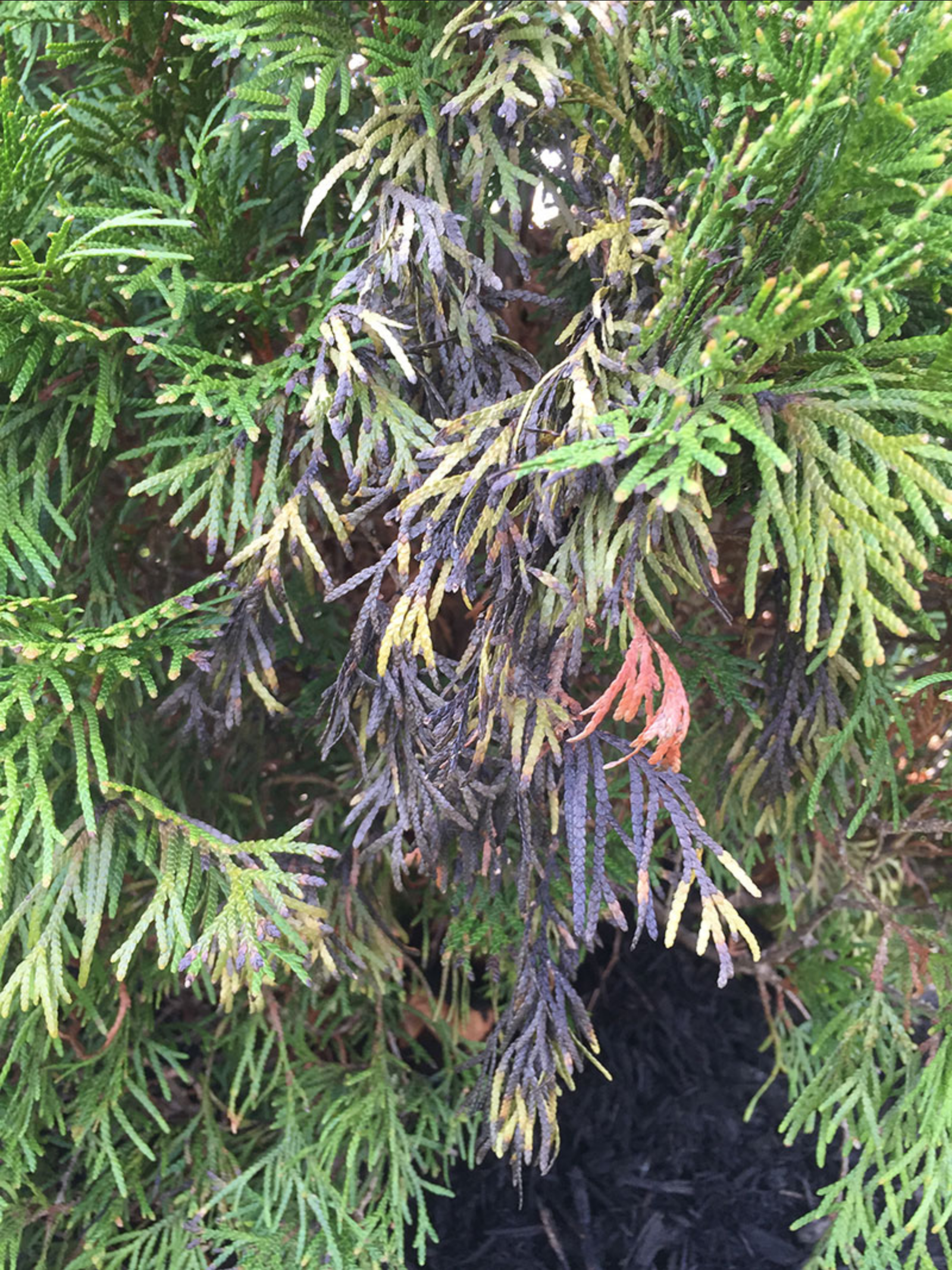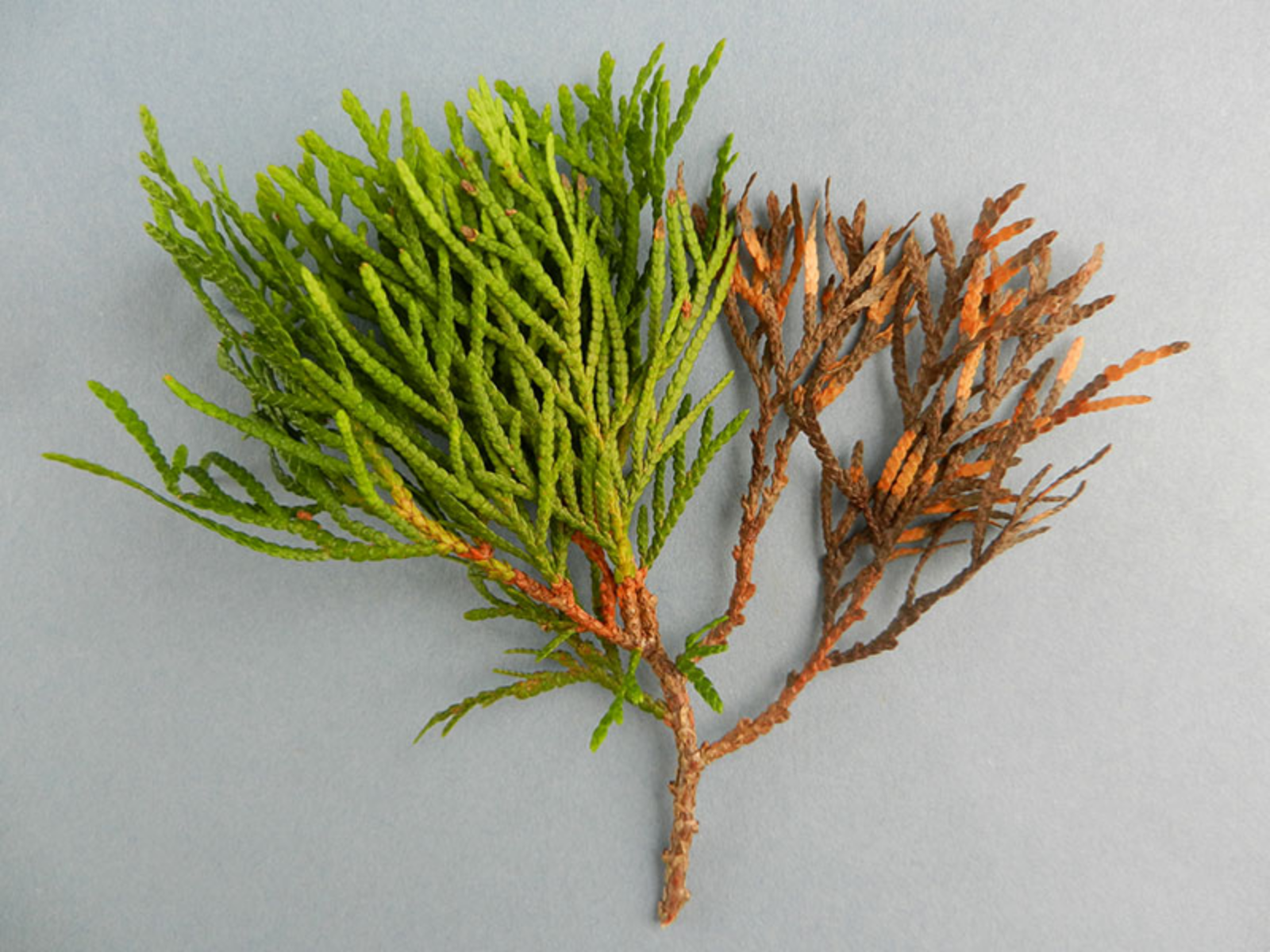picture of the week
June 27, 2022
Arborvitae - Black Flags
Tom Creswell, PPDL Director, Purdue University
Our clinic receives samples of this problem only sporadically but when one arrives we still puzzle over the cause. Over the years multiple diagnosticians have looked for a pathogen, mite or insect that may be causing twigs on arborvitae to turn shiny black as in Figure 1. To my knowledge none have found a connection. We have speculated about chemical injury in some cases but most samples involve only one or two twigs randomly scattered in a planting; a distribution that does not point to chemical injury. Likewise if drought or winter injury were the cause we would expect the damage to be more widespread. While the cause remains a mystery the good news is that the problem does not spread to other plants. Figure 2 shows a close-up of an affected twig. What to do? Prune out the black twigs, taking care not to cut any more material than necessary. In general provide normal care for arborvitae: water during hot dry periods, mulch correctly to keep down weeds and conserve moisture and fertilize lightly in the spring to promote new growth.
Click image to enlarge
Also see this article on Arborvitae problems:




